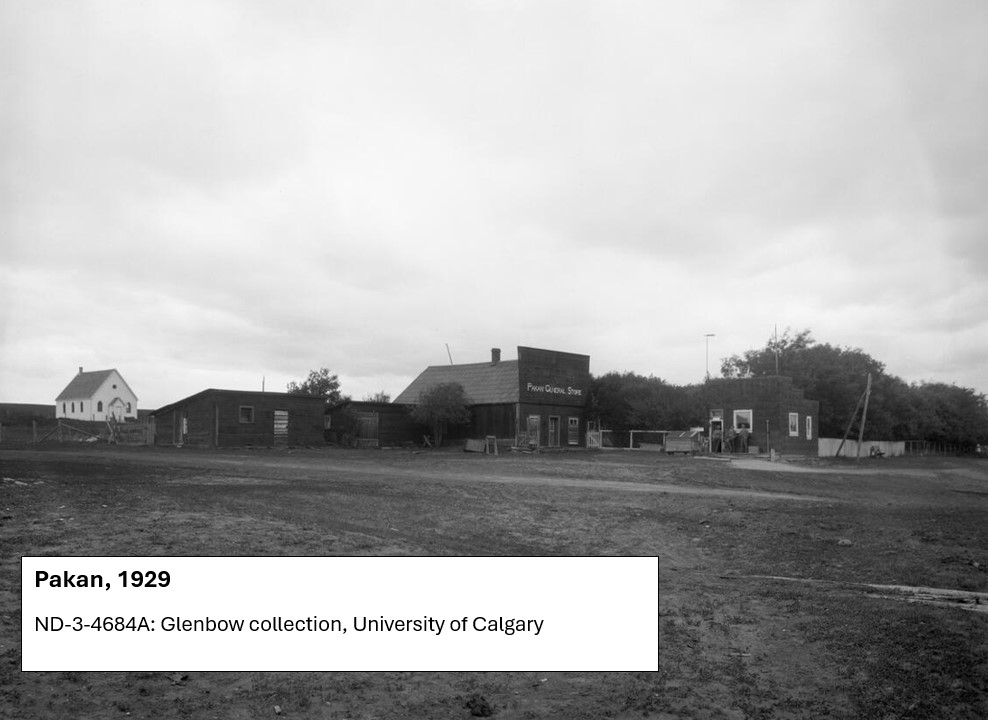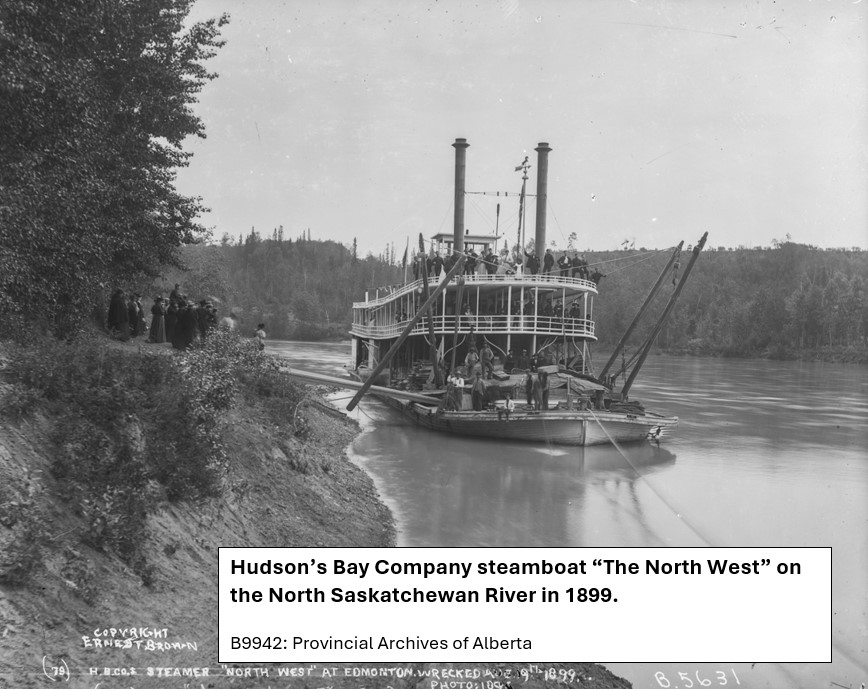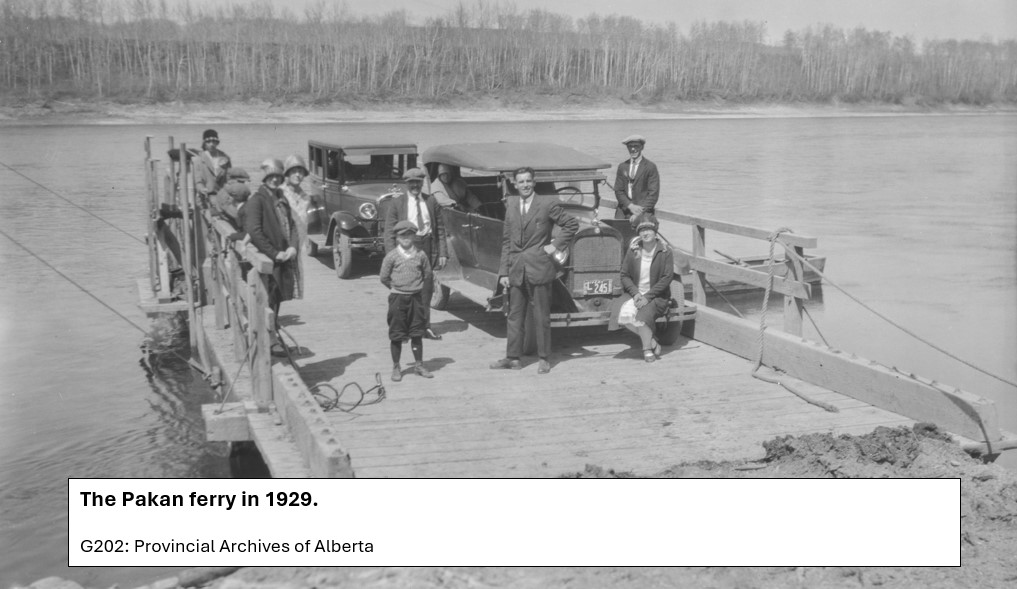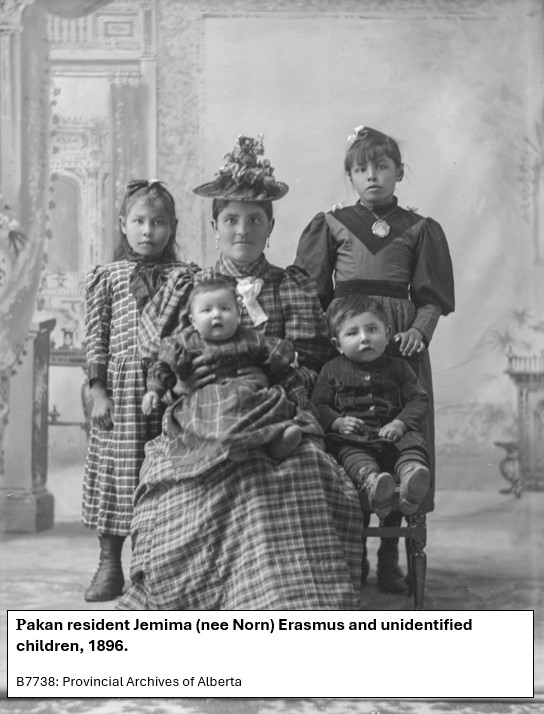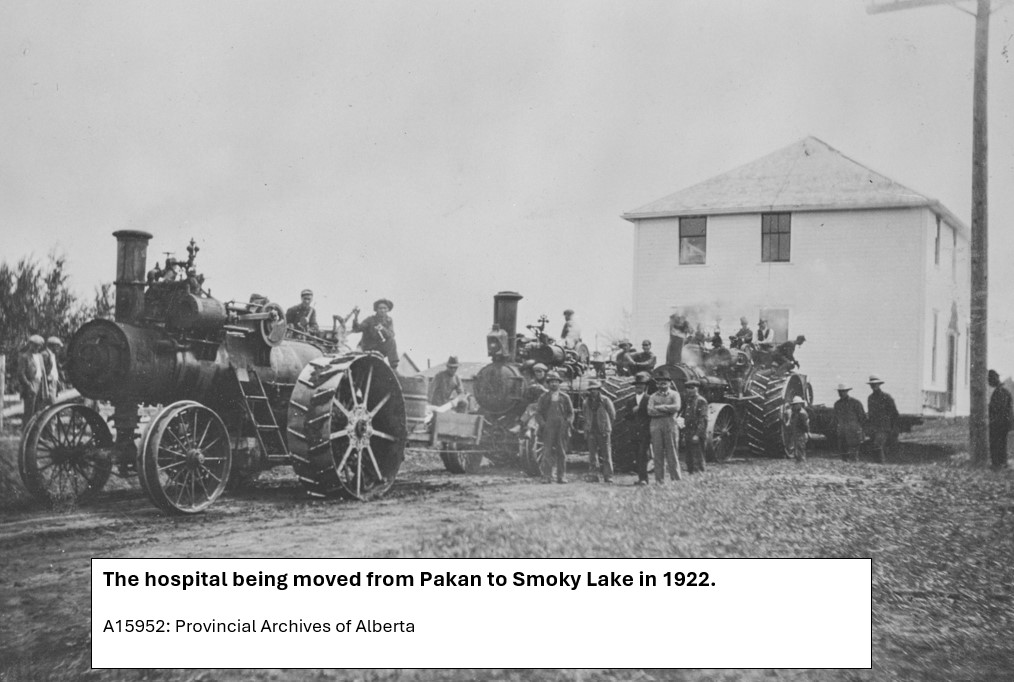Victoria Settlement Provincial Historic Site is a place to explore the lives of people living on this land from 1860 to 1922. Life here was constantly adapting to reflect the changes happening across the rest of Alberta.
1860s:
In the 1860s, Victoria Settlement was a bustling place. During the seasonal round of the buffalo hunt, Cree encampments at the site were substantial, sometimes numbering more than 150 tipis. Wild herds of buffalo crossed the river at this spot and people depended on them for food.
The McDougall family along with Peter Erasmus set up a Methodist Mission in 1862 to serve the Cree people who passed through the area. In 1865, Christmas celebrations included a visit from a Swampy-Cree speaking Santa Claus.
Families of mixed Indigenous-Scottish/English ancestry began to divide the land along the North Saskatchewan River into long, thin river lots. The semi-permanent community of river lot farms kept the church and school busy.
Into this community came the Hudson’s Bay Company to set up a fur trading post called Fort Victoria. The historic site sits on the land that was part of this fort. The main building in the fort, the “Clerk’s Quarters” is still standing. Built in 1864-5, it is the oldest building in Alberta still in its original location.
The river and the Victoria Trail, a cart trail that stretched from Fort Garry (Winnipeg) to Edmonton, kept Victoria Settlement connected to the rest of the west.
1870s:
The 1870s was a decade of profound change and much hardship. A smallpox epidemic in 1870 killed many people. The buffalo herds got smaller and smaller and eventually disappeared altogether.
In 1876, Treaty 6 was signed and the reserve system was created which confined the mobility of Indigenous peoples.
The amount of fur being traded decreased.
1880s:
In 1883, Fort Victoria closed because of lack of business.
Locals felt the political and social unease during the 1885 Frog Lake massacre and North-West Resistance.
Communication between Victoria Settlement and the rest of the world became easier. A telegraph line reached the community. Regular postal service was started. The founding of a post office also brought a change of name. Locals honoured Cree Chief Pakan by naming the post office, and as a result the whole community, “Pakan.”
The church community built a new church on River Lot 10, now the location of the Victoria Park Cemetery.
The Hudson’s Bay Company re-opened Fort Victoria in 1888.
1890s:
An exciting new development came to Pakan in 1892: A cable was installed to guide the ferry across the river. This ferry made access to the other side of the river much easier.
An unsuccessful attempt was made to drill for oil on the other side of the river.
The Hudson’s Bay Company finally had to admit defeat and permanently closed Fort Victoria at some point between 1896 and 1898.
1900s:
Many Ukrainian immigrants start settling on farms around Pakan.
The land around what used to be Fort Victoria is developed with other businesses to support the growing number of farmers in the area. The old fort trade store became the general store and a new telegraph office was built.
In 1906, the Methodist community built a new church, this time on River Lot 6. This church, called the “Pakan Church,” is still standing at the historic site.
Access to healthcare was improved when a modern, 2-storey hospital was built in 1907.
1910s:
By the middle of this decade, Pakan was home to four different farm machinery dealerships, two blacksmith shops, a general store or two, and even a hotel.
In 1918, the train came to Smoky Lake, some miles north of Pakan. With commerce travelling by rail instead of by river or cart as it had in the 1860s, Pakan was no longer viable.
Slowly, businesses started moving north to Smoky Lake. Often, they took their buildings with them, leaving Pakan with a lot of empty space.
1920s:
In 1922, the hospital was finally moved north to Smoky Lake. The removal of this important piece of infrastructure was the symbolic end of Pakan, although there continued to be people and even some facilities in the area for several years to come.
Although many of the buildings are gone, the stories and memories remain as vibrant as ever. Enjoy a few select photos from the past and be sure to follow Victoria Settlement on Facebook for more stories and photographs from the communities who called – and continue to call – this place home.
Banner image: Provincial Archives of Alberta, G2953_0
